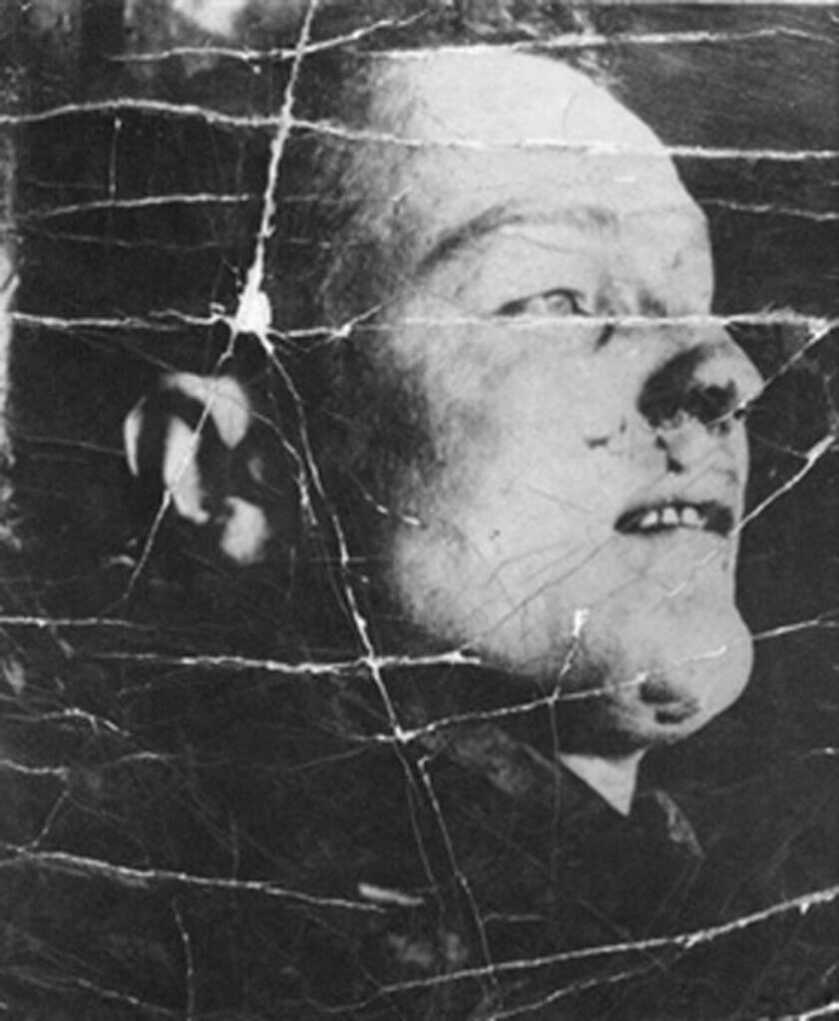
The bullet was of .303-caliber and weighed 174 grains. It entered the man’s chest underneath his right armpit, shattering the ninth rib. The projectile then yawed and tumbled through the right lung, shredding the associated pulmonary vasculature. The bullet subsequently tore through the anterior aspect of the heart and great vessels before exiting lateral the left nipple. Given the catastrophic damage, the man’s blood pressure dropped precipitously. He was unconscious in seconds and dead within a minute.

The death of Baron Manfred Albrecht Freiherr von Richthofen on April 21, 1918, was and is shrouded in mystery. Arguably the most popular fighter pilot who ever lived, von Richthofen was a victim of his violent profession. Though only twenty-five when he died, Richthofen shot down eighty confirmed Allied aircraft.
Origin Story

Manfred von Richthofen was technically Polish. Born in Kleinburg near Breslau in western Poland, Manfred was the son of Prussian nobility. His father was Major Albrecht Phillipp Karl Julius Freiherr von Richthofen, and he had an elder sister as well as two younger brothers. One of his brothers, Lothar, finished the Great War with forty aerial victories himself. Young Manfred began his formal military training at age eleven.

At age nineteen he joined an Uhlan Cavalry unit. Early in World War 1 a young von Richthofen served as a cavalry reconnaissance officer on both the Eastern and Western fronts. He fought in Russia, France, and Belgium. Once the war devolved into static trench combat the German Imperial Army no longer had need of large numbers of cavalry soldiers. As a result, von Richthofen was transferred to the supply service.

Frustrated with life in the supply trains von Richthofen applied for the Imperial German Army Air Service later known as the Luftstreikrafte. He purportedly wrote on his application, “I have not gone to war to collect cheese and eggs…” Despite his impertinence, the young Prussian cavalry officer was accepted.
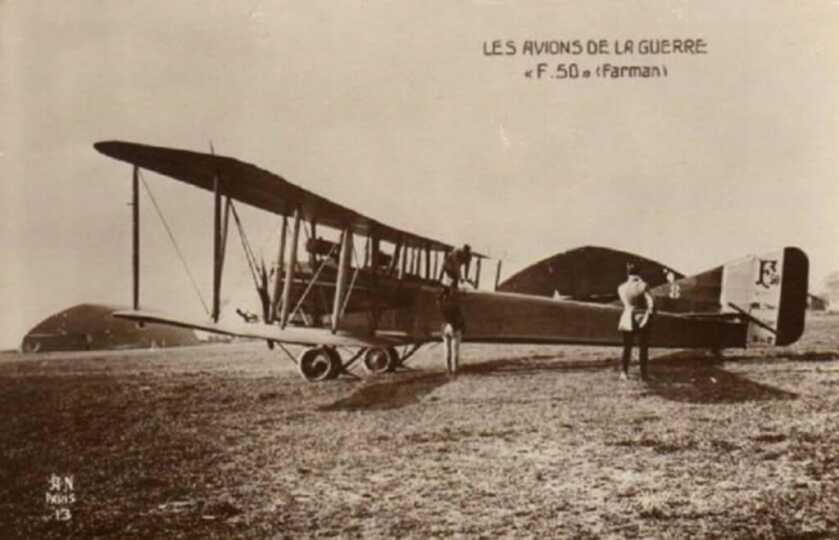
From June to August of 1915 Manfred served as an observer on reconnaissance missions over the Eastern Front. Once transferred to France he purportedly shot down a French Farman airplane with his tail gun. However, as the plane crashed behind French lines it could not be confirmed.

After a chance meeting with legendary German fighter pilot Oswald Boelcke, von Richthofen applied for pilot training in October of 1915. Four months later Manfred convinced his brother Lothar to follow him into the Fliegertruppe. Early in his career, Manfred seemed like a pretty lousy pilot.

Manfred crashed on his first solo in a tactical aircraft, an Albatross C.III. However, he learned quickly and likely scored his first aerial victory over Verdun in April of 2016. German standards for claiming victories were stringent. As this French Nieuport went down over enemy territory it was not verified. A week after this event von Richthofen flew into a thunderstorm against the orders of his superiors and barely escaped with his life.
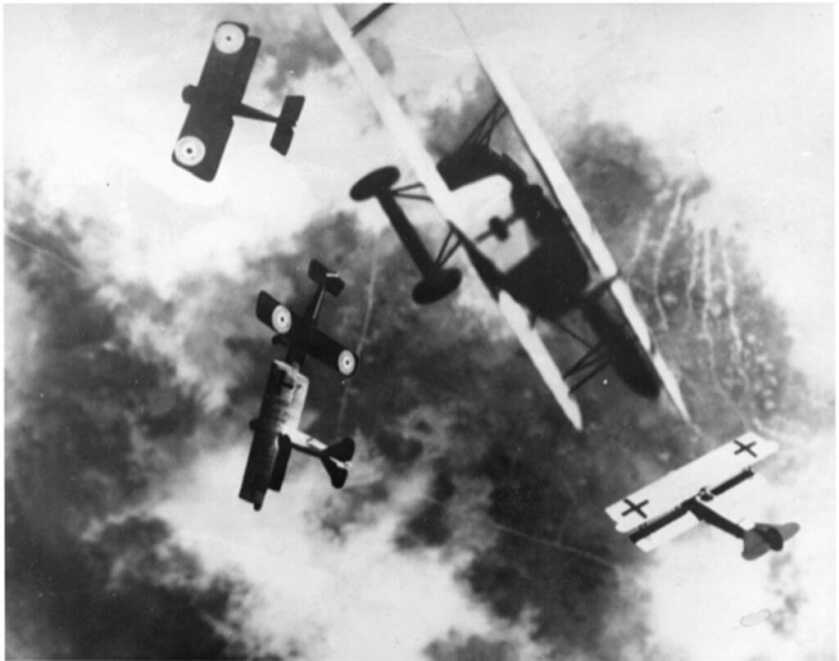
In August of 1916 von Richthofen joined Oswald Boelcke’s elite Jasta 2. On September 17, 1916, over Cambrai, France, von Richthofen scored his first confirmed aerial victory. A month later von Richthofen saw his hero Boelcke killed in a midair collision with another German aircraft.
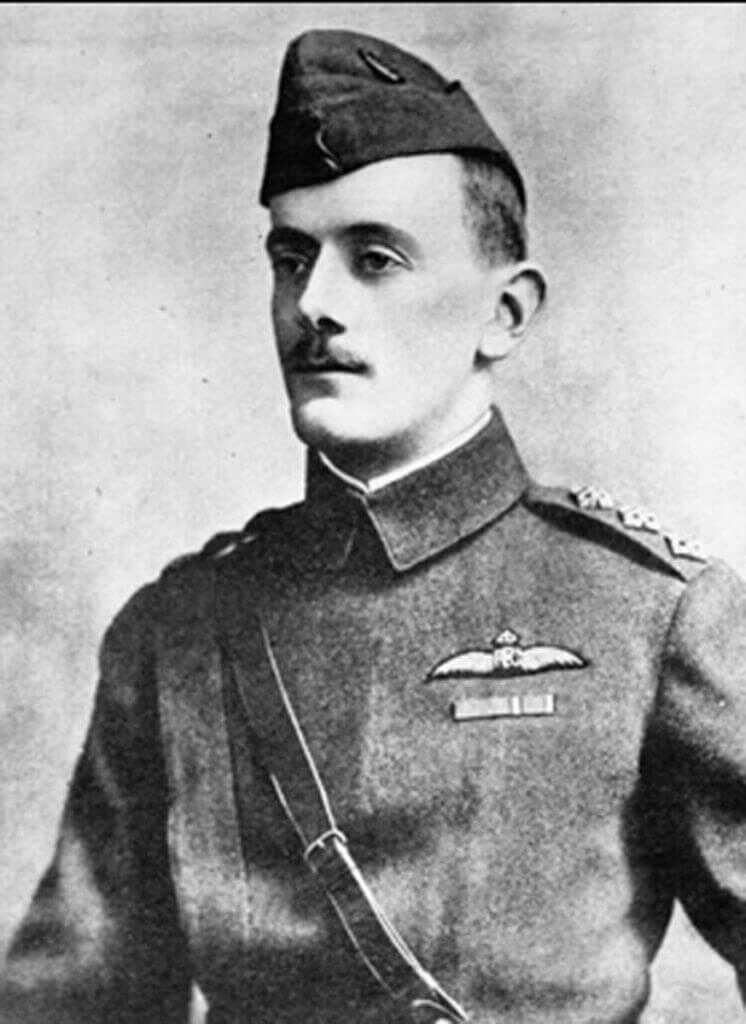
Von Richthofen was not known for his aerobatic prowess. He was rather a methodical aerial hunter and a superb marksman. He would typically attack an enemy aircraft from up sun and behind while his squadron mates provided cover. In November of 1916 while flying an Albatross D.II fighter von Richthofen shot down and killed Major Lanoe Hawker, one of Britain’s most successful fighter pilots.
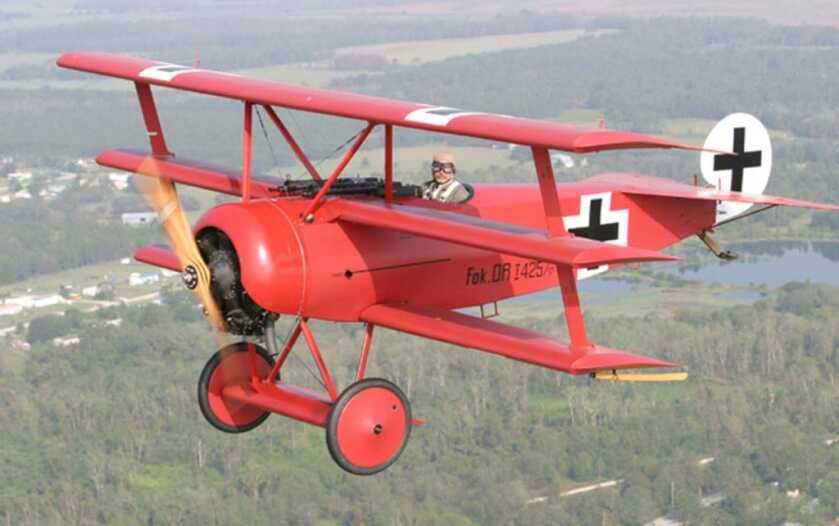
Manfred von Richthofen has become associated with his famous red Fokker Dr. I triplane, but that was not where he spent most of his combat time. Most of his aerial victories were scored in Albatross fighters. Despite the Dr. I’s remarkable agility, the lumbering triplane was fairly slow. Von Richthofen was an ardent supporter of its replacement, the Fokker D.VII, but he died before having a chance to fly it.
The Baron’s Brush with Death
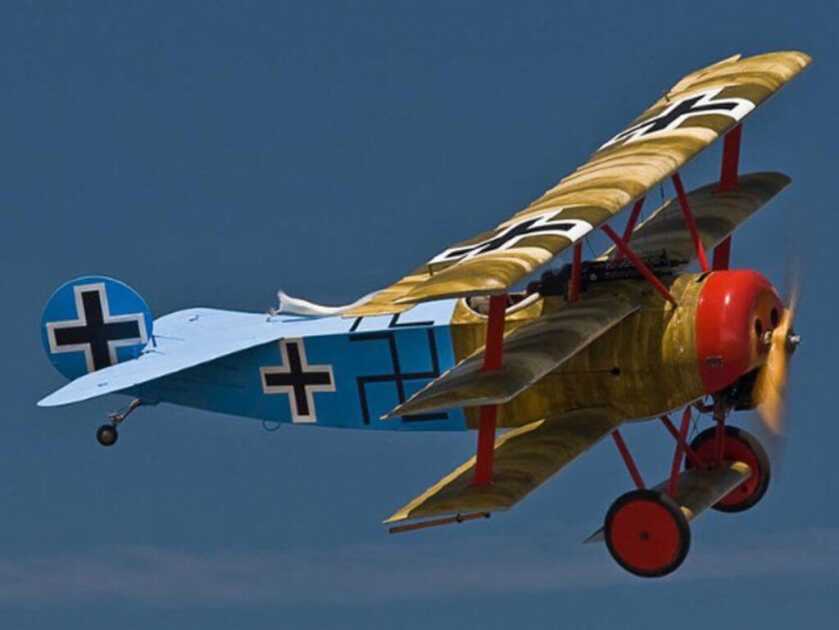
In April of 1917 while in command of Jasta 11 von Richthofen shot down 22 British planes, including four in a single day. By June he had taken command of Jagdegeschwader 1 and its four separate fighter squadrons. This organization was known as von Richthofen’s Flying Circus based upon its tents and trains as it moved about the front providing aerial fire support. Throughout this period von Richthofen had his fighters painted bright red as both an identification aid for his own pilots and for its intimidation value.

On July 6, 1917 von Richthofen was flying an Albatross D.V against a flight of British F.E.2d two-seat fighters when he caught a bullet to his head. The resulting four-inch wound left him temporarily partially blind and badly disoriented. Von Richthofen barely recovered from a spin and executed an emergency landing near German troops.
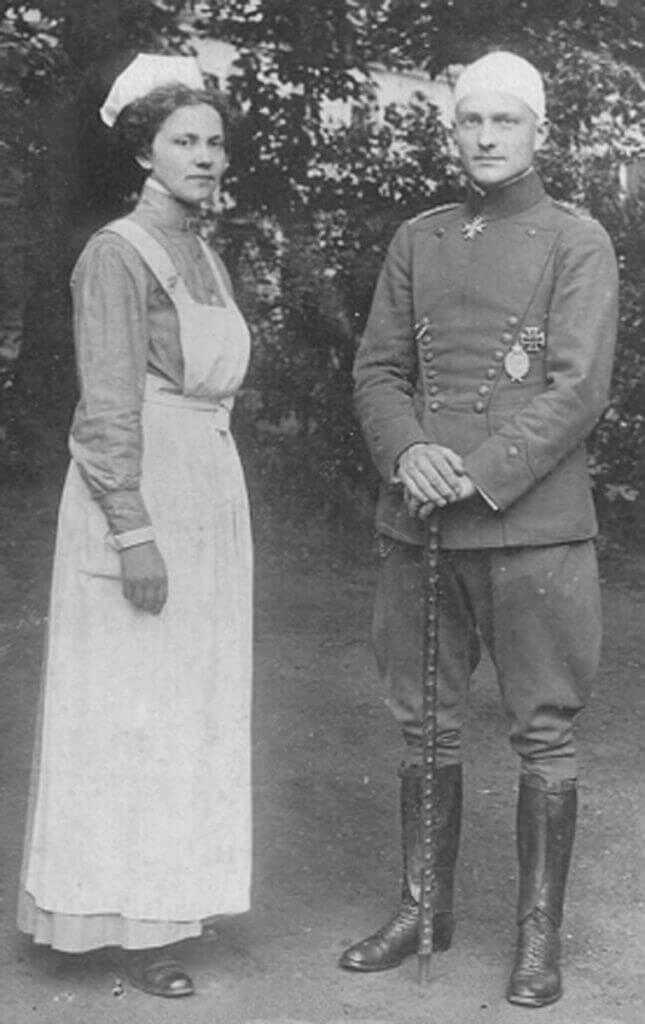
After multiple surgeries to remove bone splinters von Richthofen left the hospital against doctor’s orders only two weeks after being wounded. However, the combination of the injury and cumulative combat stress took its toll. The great ace began suffering recurrent headaches and regular post-flight nausea. Acquaintances also noted a marked change to his temperament.
The End of von Richthofen

On April 21, 1918, Manfred von Richthofen was flying his red Dr. I triplane in pursuit of a British Camel piloted by Canadian Wilfrid “Wop” May. May had just engaged von Richthofen’s cousin Wolfram, and the Baron apparently allowed the intensity of the moment to cloud his judgment. He followed May down to low level above Allied trenches.

At the same time, another Canadian Camel pilot named Arthur “Roy” Brown made a diving attack on von Richthofen’s brilliant red triplane. The RAF ultimately gave Brown credit for downing the Baron, but forensic evidence makes this unlikely.
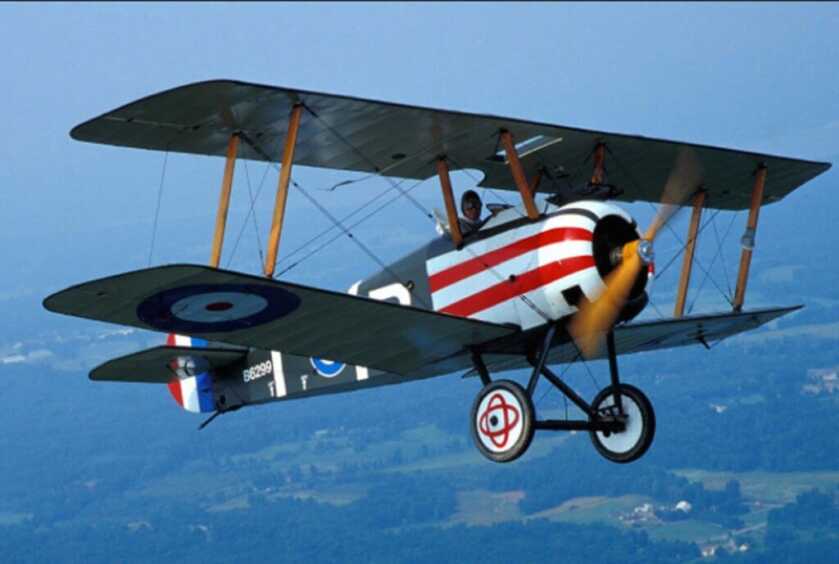
The single .303 bullet that killed von Richthofen came from below and to the right, an orientation that makes it the likely result of ground fire. Von Richthofen’s triplane flew on for about two minutes after Brown’s engagement, something unimaginable given the severity of his wound.


Credit for the fatal shot has alternately been claimed by Sergeant Cedric Popkin armed with a Vickers gun as well as WJ “Snowy” Evans and Robert Buie wielding Lewis machineguns. Brown’s Camel also mounted a brace of air-cooled Vickers guns. It could of course also just been some nameless grunt with a rifle. Regardless, in his last few seconds of life von Richthofen made a forced landing in which his triplane was not badly damaged. However, souvenir hunters quickly ravaged the plane.
The Weapons
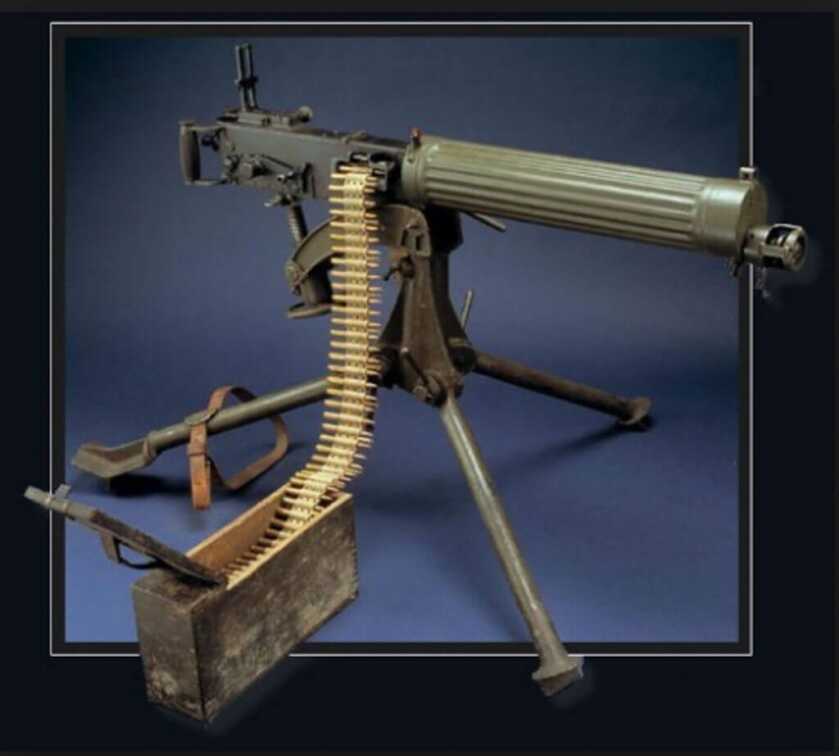
The British Vickers water-cooled machinegun was itself an adaptation of the classic Maxim action that drove most of the belt-fed automatic weapons used on all sides during WW1. The Vickers entered service in 1912 and was served by a six to eight-man crew. Despite its 53-pound all-up weight, the tripod-mounted Vickers gun was a remarkably effective battlefield implement.

In August of 1916, the British 100th Company of the Machine Gun Corps fired their ten Vickers guns continuously for twelve hours. Using 100 barrels they fired a million rounds without a single failure. The Vickers gun continued in British military service until 1968.

Like Hiram Stevens Maxim, the designer of both the British Vickers and German MG08 machineguns, Colonel Isaac Newton Lewis was also an American. His eponymous machine rifle entered service in 1913.

Unlike the belt-fed, water-cooled Vickers, the Lewis gun was a pan-fed, air-cooled design. The characteristic fat tubular barrel jacket found on ground variants of the Lewis gun actually contained long aluminum cooling fins of dubious value. Aerial versions of the gun dispensed with this component.
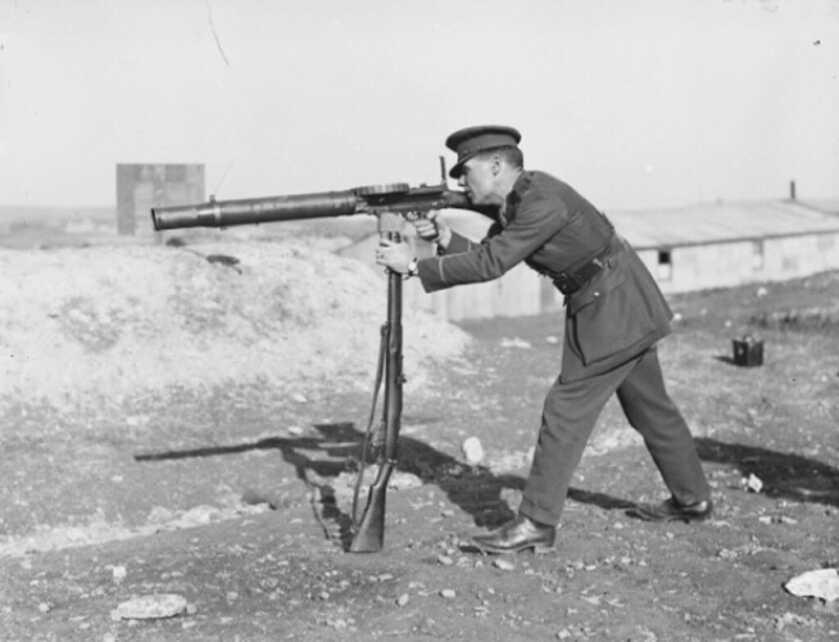
Unlike the recoil-operated Maxim design, the Lewis was a gas-operated weapon driven by a clockwork-style spiral spring contained within the semicircular housing on the bottom of the gun. The Lewis gun fed on either 47 or 97-round pan drums and cycled at between 500 and 600 rounds per minute. The 28-pound Lewis could be fired by one man on the assault and offered significant enhancements in both mobility and firepower.
The Rest of the Story

WW1 represented the world’s rude introduction to warfare on an industrial scale. Despite millions of lives lost, there yet remained vestiges of the chivalry that characterized combat in previous eras. As a result, von Richthofen’s body was afforded full military honors.
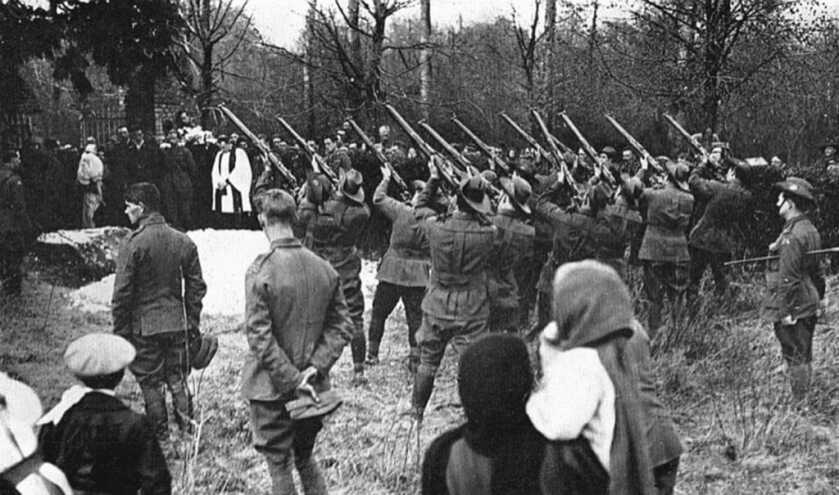
No. 3 Squadron of the Australian Flying Service presided. Six of their officers served as pallbearers, while a guard of honor fired in salute.

Nearby Allied squadrons sent memorial wreaths, one of which was inscribed with, “To Our Gallant and Worthy Foe.”

Von Richthofen’s body was years later moved to Berlin and given a state funeral by the Nazis. His imposing gravestone read simply, “Richthofen.” This marker was damaged by gunfire from East German border guards shooting at escapees as they fled communism during the Cold War. In 1975 von Richthofen’s corpse was reinterred yet again in the Richthofen family plot in Wiesbaden, Germany. It was a fitting end for one of the most flamboyant fighter pilots of all time.



There has been a great deal of romantic rubbish written about von Richthofen. He was a brave – even heroic – figure. But he was a realist who has been turned into something he never was. He once said: “We are here to shoot down enemy aircraft. Anything else is rubbish”. No romanticism there at all. Let us give the man his due. A tough leader of determined men bent on doing their duty. If his (British) opponents survived the fight them well done. If they did not then tough. The first war in the air was brutal and a dogfight was (and still is) no place for the faint hearted. Anyone who believes differently is viewing the horrors of war through rose tinted glasses obscured by the myth of Knightly chivalry. There was nothing chivalrous about being cremated alive with only a bullet in the head as the way out. Manfred von Richthofen knew this better than most and recognised war for what it was and for what Hollywood and others refused to acknowledge. A tough dirty hell hole of a business that was better done quickly to get it out of the way. MvR was tough, pragmatic and realistic. As he said “anything else is rubbish”.
Huh???? “Manfred crashed on his first solo in a tactical aircraft, an Albatross C.III. However, he learned quickly and likely scored his first aerial victory over Verdun in April of 2016.”
The Baron’s fame stretches even further — This July a Swedish heavy metal band that specializes in telling historically correct stories primarily with a military history theme came out with an album commemorating the Great War. Yes, I said that correctly. The band is Sabaton and the song is, appropriately, “The Red Baron”. If, like me, you spent your teen years somewhere in the 1980’s, the music itself is quite familiar. Somewhere between the Ramones and Metallica, with a splash of the London Boys Choir. No kidding on that too. Also, they sing in English, a nice touch.
Anyway, the song opens with a cathedral pipe organ, nee electronic keyboard synthesizer, producing a fitting tribute to the Baron’s noble ancestry and, as the author above mentions, the chivalry and aristocratic formality of the era. Check it out if you want your kids to think you’ve flipped. But seriously, this is an important addition to the historical record of a fascinating character.
Another enjoyable illistrated read. Well done. I wouldn’t cast doubt on Browns Kill as combat aerial manuvers can cause all manner of angles to be presented toward the attacker. We have May chasing Wolfmam, the Baron dives then chases May and further Brown dives on the Baron. With this string of aircraft in pray or predator mode (with the intent of gaining advantage): to be flying straight and level is absurd.
Back in the mid-1980’s I was present when a phone call to the Vancouver Police Dept. in B.C. asked for someone to collect a number of guns from a senior citizen. The senior citizen was contacted & visited by members of the VPD. In her basement were a number of small arms and a Vickers aircraft mounted machine gun plus two Maxim aircraft machine guns. The Vickers & one of the Maxims were complete while the other was missing some vital parts. The lady was asked why she had these firearms. Her response was that her (now deceased) father in law brought them back from WW I. His name was (Capt.) Roy Brown, of the Royal Flying Corp. I have a picture of myself with the Vickers. The guns were, apparently, donated to the B.C. Aviation Museum in Langley, B.C. Lost touch years ago, but still have my photo. Anyone interested is welcome to follow up &, hopefully, re-locate them.
He was an example of “Live hard, die young, and have a good looking corpse,” only he didn’t. One does have to respect the mortally wounded Richthofen guiding his plane to a decent landing even though he would never be able to climb out of the cockpit once he was down. Literally he “died with his boots on.”
The only man man who dies in a hopeless cause is the one who dies in bed at home rather than serve to defend his home and hearth. He is a hopeless creature that no one will remember. It is why we remember men like this ace and the men who fought in WWI rather than the cowards who bray peace and seek the havens of academia.
Poignant and well said. I’d rather die on my feet, then laying down or on my knees. The real test of a man’s mettle isn’t about his bravery or courage, but in those times of doubt and hopelessness, their will evaporates those clouds like a laser beam and then perseverance against unbelievable odds and come out the other side whole and better for it. Sometimes not, but no one will understand these men until you’ve done what they’ve done.
What? Did willy clinton die??
Great story from a great writer. How the Left must hate him, given his hunting, gun loving and Veteran background. Not to mention his Old School work ethic that equals that of three men.
This is a superb telling of history, kudos to the author.
P.S. I’m a Democrat with a fair-sized Gun collection and I go to the range on a weekly basis.
Don’t judge all of us “Leftists” by the oral diarrhea affecting most of the current crop of “contestants” oops – wanna be Candidates – for President. They no more represent the majority of us Liberals than Trump does.
God bless the funny looking dog with the big black nose. Put credit where credit is due.
Not all Brit aces held the Red Baron in high esteem, upon hearing of his death one notable Brit ace remarked “I hope he burned the whole way down”.
Not a nice thing to say, as that was one of the greatest fears of many pilots at the time.
Every year on Halloween the Red Baron shoots down Snoopy…
It the photo of the stormtroopers, it appears the trooper carrying the Mg34 is toting it upside down — bi-pod-up. Odd.
Thank you for this article shedding light on the man himself. It’s very interesting to learn who the man within the myth was.
Years ago I was stationed at EDOS for two months with the Legion Estrangere, the base also called Sleisshiem airfield is within walking distance of the Barons castle. The airfield was a Luftwaffa base in ww2 and had a number of unusual features, one was that it could be completely flooded on short notice to look like a lake from the air. There were large underground aircraft hangars as well as an operations building 14 stories underground, there was also a small replica town constructed to further confuse bomber aircraft flying over.